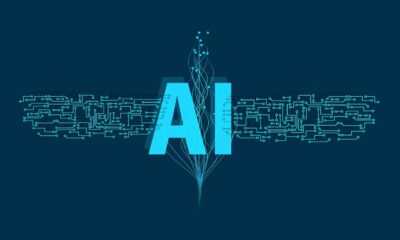Biotech
Diagnostics through AI, a Market of $13.3 Billion for the Health Sector
The diagnostics sector has the highest expected growth rate until 2030. The report highlights the need for smart financing in order to achieve efficient investment in technology and Artificial Intelligence. In this process, the first necessary step is the replacement of obsolete technologies and equipment to acquire new technological tools. The third step will be the transformation towards smart buildings.

Artificial intelligence arrives stomping in Spanish healthcare. The diagnostics area will be the health segment with the highest annual growth through artificial intelligence (AI), with a rise of 32.5%, up to $13.3 billion between 2022 and 2030, according to the study Digital Transformation in primary care, published by Siemens Financial Services (SFS).
If you want to read more about artificial intelligence and the Spanish healthcare sector, download for free the Born2Invest mobile app. Our companion app brings you the most important business news of the day for you to stay informed.
Telemedicine is the second area after diagnostics with the most important growth rate
After the diagnostics sector, the second area with the highest annual growth rate will be telemedicine, with an increase of 22.9% in the next seven years thanks to AI, up to $392.2 billion, compared to the current $75.3 billion.
The current turnover of smart hospitals revolves around $58.6 billion and between 2022 and 2030 it is expected to rise to $239.6 billion, which represents an average annual increase of 19.3%. Surgical robots are placed in the fourth position of the growth rate between 2022 and 2030, with an annual increase of 20%, up to $20.8 billion.
Among the areas with the lowest growth forecast for 2030, investment in digital pathology stands out, which will have a turnover of $2.4 billion and an expected growth rate of less than 15%.
The current financing of the public sector makes the digital transformation towards new technologies that include AI unfeasible, according to Siemens
Laboratory automation will reach a growth rate of less than 10%, up to €12.9 billion. A similar example occurs with diagnostic imaging, which will experience an average annual increase of less than 5% between 2022 and 2030, up to $49.8 billion.
SFS research argues that current funding levels will make it impossible to transform the healthcare sector toward incorporating artificial intelligence. Factors it highlights include delays caused by the Covid-19 pandemic and tight government health budgets.
For this reason, he pointed out the private sector as a fundamental cog in this evolutionary process, since it “requires intelligent financing, either to absorb the volume of renovations and replacements, to take advantage of the rapid growth of new technologies, or both.”
The report highlights the need for smart financing in order to achieve efficient investment in technology and Artificial Intelligence. In this process, the first necessary step is the replacement of obsolete technologies and equipment in order to acquire new technological tools. The third step will be the transformation towards smart buildings.
The diagnostics sector has the highest expected growth rate until 2030
The reconversion process would include the replacement and updating of outdated equipment to improve productivity and efficiency in patient diagnoses. In the environmental and energy field, the incorporation of new equipment means a reduction in emissions and energy costs.
“Healthcare organizations are well aware of the advantages of digitization, but in practice, many encounter real obstacles to investment,” said the general director of SFS in Spain, Hiart Legarreta.
__
(Featured image by geralt via Pixabay)
DISCLAIMER: This article was written by a third party contributor and does not reflect the opinion of Born2Invest, its management, staff or its associates. Please review our disclaimer for more information.
This article may include forward-looking statements. These forward-looking statements generally are identified by the words “believe,” “project,” “estimate,” “become,” “plan,” “will,” and similar expressions. These forward-looking statements involve known and unknown risks as well as uncertainties, including those discussed in the following cautionary statements and elsewhere in this article and on this site. Although the Company may believe that its expectations are based on reasonable assumptions, the actual results that the Company may achieve may differ materially from any forward-looking statements, which reflect the opinions of the management of the Company only as of the date hereof. Additionally, please make sure to read these important disclosures.
First published in PlantaDoce, a third-party contributor translated and adapted the article from the original. In case of discrepancy, the original will prevail.
Although we made reasonable efforts to provide accurate translations, some parts may be incorrect. Born2Invest assumes no responsibility for errors, omissions or ambiguities in the translations provided on this website. Any person or entity relying on translated content does so at their own risk. Born2Invest is not responsible for losses caused by such reliance on the accuracy or reliability of translated information. If you wish to report an error or inaccuracy in the translation, we encourage you to contact us.

-

 Crowdfunding2 weeks ago
Crowdfunding2 weeks agoSwitzerland’s Crowdfunding Market Remains Stable – Without Growth
-

 Crypto2 days ago
Crypto2 days agoBitcoin Traders on DEXs Brace for Downturn Despite Price Rally
-

 Business1 week ago
Business1 week agoDebt-Fueled Markets, Zombie Corporations, and the Coming Reckoning
-

 Impact Investing6 days ago
Impact Investing6 days agoGlobal Energy Shift: Record $2.2 Trillion Invested in Green Transition in 2024

























